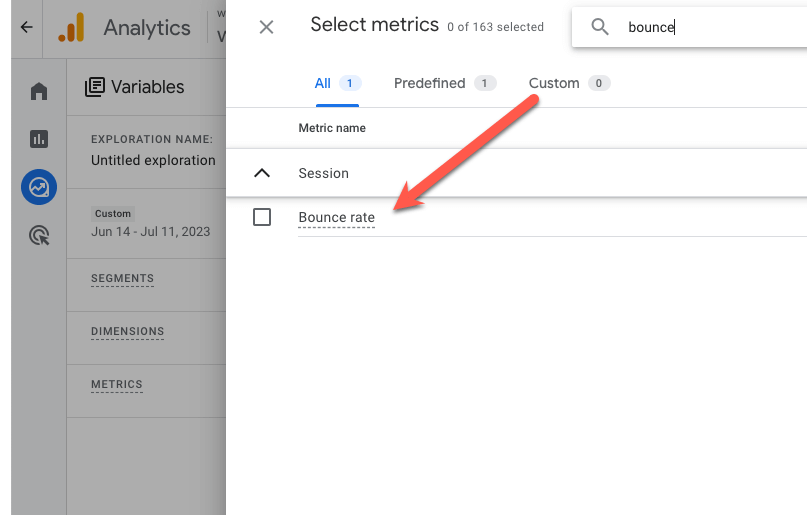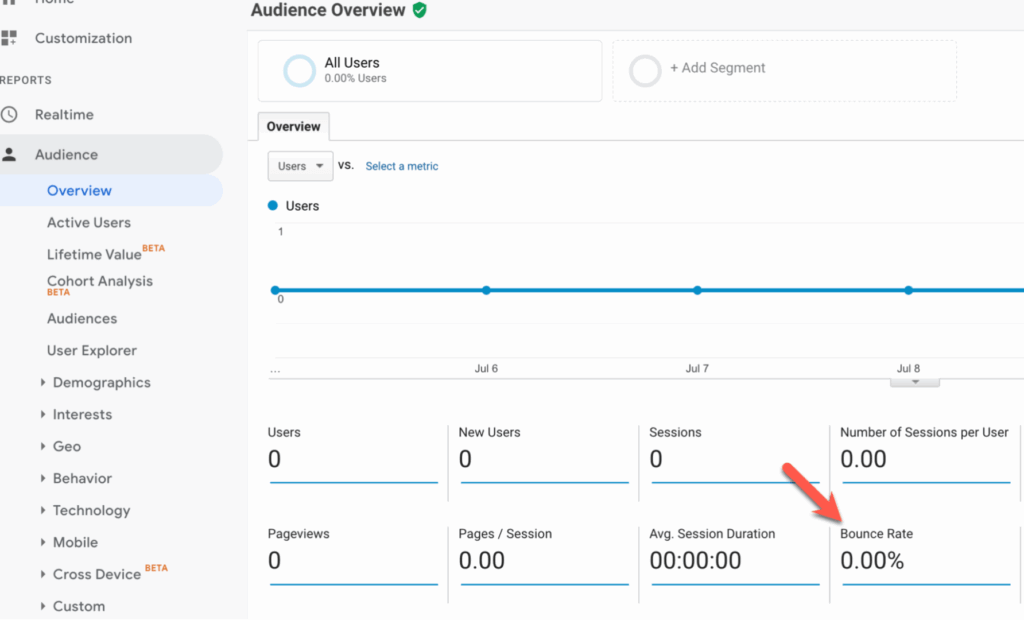
GA4 Engagement in 2025: How AI Is Changing the Way We Read the Room
It’s been nearly two years since Google sunsetted Universal Analytics. When GA4 first launched, many marketers were confused, frustrated, and skeptical—particularly when they couldn’t find familiar metrics like Bounce Rate in default dashboards.
Now, in 2025, that early confusion has largely given way to a deeper focus on engagement metrics, most notably Engaged Sessions. This shift has created not only a better framework for understanding how users interact with websites, but also opened the door to powerful AI-driven insights that help us interpret user behavior in smarter, more strategic ways.
Here’s a look at how Bounce Rate still exists (in name only), what GA4’s new engagement-first philosophy means for marketers, and how AI is changing the game for performance interpretation.
Did Bounce Rate Go Away? Where Is It?
If you’re one of many marketers who thought Bounce Rate was removed, only to learn that “maybe” it’s still around — don’t feel bad, Google made the situation confusing.
During the early GA4 days, Google seemed to imply it was removing Bounce Rate in lieu of a more modern, “user-engaged” approach to metrics.
For example, if I go into a Free Form Explorer report and click + under Metrics, I can find Bounce Rate and deploy it in a report.

As mentioned earlier, it may feel like Bounce Rate is gone, but that’s due to its lack of deployment in out-of-box reporting. In Universal Analytics, Bounce Rate was a centerpiece metric in out-of-box reporting, such as the default Audience Overview dashboard report.

Summary:
- Bounce Rate still exists in GA4 but is hidden from default views.
- Users must manually add it in custom reports to access it.
- Google prefers marketers use modern engagement metrics over Bounce Rate.
Google Analytics 4’s New Relationship with Bounce Rate Explained
We mentioned during our opening that marketers and clients often found Bounce Rate confusing. Because clients often view Bounce Rate as “user rejection,” the stat felt like a reflection of that website, or website pages’, viability and status.
In simple terms, most people view Bounce Rate as the result of a dissatisfied user.
Let’s begin by explaining what Bounce Rate is and then move into why Google pulled back exposure to it.
Bounce Rate is the inverse of an engaged session. In the GA4 ecosystem, in order to understand what Bounce Rate means, you’ll need to understand what an engaged session is. Because anything that’s not an engaged session is, in fact, categorized as a bounce.
Engaged Sessions, a Better Way to Interpret User Experiences
Bounce Rate did one thing consistently well — it implied a negative scenario.
Clients constantly sought to avoid X percentage on Bounce Rate. When Bounce Rate rose, the red arrow displayed.
Sure, clients desired improvements to their website page’s user experience as a way to “correct” Bounce Rate. But often, and as we’ve shown, there was nothing to “correct.”
Google Analytics 4 shifts us to a more modern way to digest the user experience. The metric is called the “Engaged Session.” Google hopes Engaged Session better encompasses the idea many marketers and clients leveraged Bounce Rate for.
What Is an Engaged Session?
By explaining Engaged Sessions in a simple manner, we equally dismiss the concept of Bounce Rate.
An engaged session in Google Analytics 4 is a session that meets one of the following criteria:
- It lasts for at least 10 seconds.
- It includes one or more conversion events.
- It includes two or more pageviews or screenviews.
So rather than optimizing to avoid a session timing out, we’re optimizing to encourage specific user activity that better signals an engaged mindset. When we read the definition of an Engaged Session, we understand how it resolves the infirm signals that often led to a Bounce.
Summary:
- GA4 encourages a focus on positive signals, not user rejection.
- Engagement criteria are tied to meaningful behavior, not passivity.
- It’s a cleaner, less confusing way to evaluate user interest.
How AI Can Reveal Deeper Insights into Engagement
GA4’s shift toward engagement-first analytics opens the door for AI to play a more active role in surfacing patterns that were once hidden beneath Bounce Rate averages.
With machine learning models and LLMs like ChatGPT, analysts can now:
- Show micro-patterns in user paths that predict engagement, such as scroll depth sequences or CTA hover time.
- Generate hypotheses around what’s causing low engagement in specific audience segments—before formal A/B testing even begins.
- Use anomaly detection to flag sudden changes in engagement rates by device, referral source, or campaign cluster.
With AI platforms such as ChatGPT, we can now upload data that includes engaged sessions to better understand how users are interacting with content and product pages — per device, per region, per browser, and the list goes on.
These AI-powered insights make it easier to move beyond surface metrics and into behavioral drivers. And because tools like GA4 and BigQuery integrate well with platforms that support Python and R, layering in AI logic doesn’t require you to abandon your data ecosystem.
We’re no longer guessing at why people bounce — we’re using AI to learn why they stay. And this is helping us better craft our strategy.
Curious how AI is reshaping traditional search too? See how ChatGPT stacks up against Google in everyday queries in this article on AI vs. traditional search.
Types of Engaged Session Metrics
Engaged Sessions
The number of sessions that met the criteria for an engaged session.
Engaged Sessions Per User
If you have 100 users and 200 Engaged Sessions, your Engaged Sessions per user is 2. This metric reflects repeat engagement and high user value.
Engagement Rate
Engagement rate = (Number of engaged sessions / Total sessions) × 100
If 100 sessions occurred and 20 were engaged, your rate is 20%.
User Engagement
The total amount of time users actively interacted with your website or app content.
Average Session Duration (Engaged)
Average session duration = total duration of engaged sessions / number of engaged sessions
This isolates only meaningful time, not time spent idle.
In 2025, the shift toward engaged sessions isn’t just an upgrade—it’s a mindset change.
Bounce Rate still exists behind the curtain in GA4, but it’s no longer the leading character. Google’s engagement-first model, combined with AI-powered analytics, helps marketers understand not just what happened, but why users behave the way they do.
It’s a smarter framework for interpreting user intent, shaping content strategy, and making decisions with confidence.
FAQs About Bounce Rate, GA4, and Engagement Metrics
Is Bounce Rate completely removed in GA4?
No, it still exists—but it’s no longer in standard reports. You must manually add it to custom views.
Why is Engagement Rate a better metric?
It reflects active, intentional behavior rather than passivity, helping marketers optimize toward real value.
Can I still use Bounce Rate in my dashboards?
Yes, especially for backward compatibility or legacy views—but don’t rely on it as your primary KPI.
How can AI help with engagement analysis?
AI can detect behavioral trends, flag anomalies, and assist in predicting what content types improve engagement.
Should I teach clients about Engaged Sessions?
Yes. It simplifies reporting, focuses on positive user actions, and removes ambiguity from legacy metrics.
This is not an advertisement, and solely reflects the views and opinions of the author. This website and its commentaries are not designed to provide legal or other advice and you should not take, or refrain from taking, action based on its content. Additionally, unless otherwise stated, neither 9Rooftops nor the author is involved in, or responsible for, the marketing or promotional efforts of the individuals or entities discussed.
